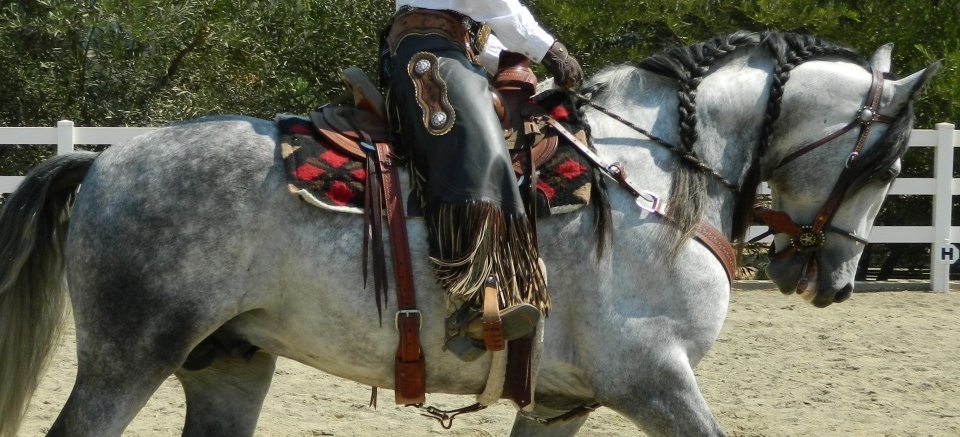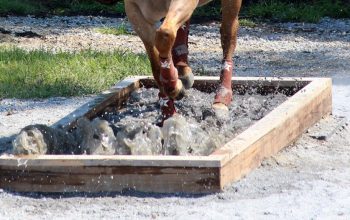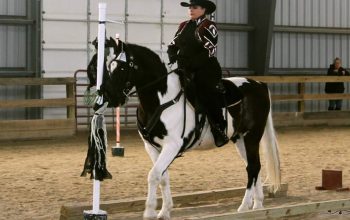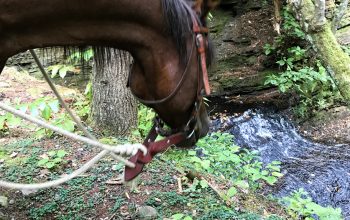
Story by Julie Alonzo, President of WE United
People come to the sport of Working Equitation from a variety of backgrounds. Some leap into the sport from the world of three-day eventing or transition smoothly from the USDF dressage court to the Working Equitation arena. Others lope their way in from Western disciplines. Still others step into the sport from Competitive Trail, Obstacle Challenge, or Endurance racing. A number of riders have slid into Working Equitation from a previous background in reining. A few have joined the sport after dominating breed halter and movement classes and rolling over their competition in driving events. And not to be overlooked, a core group of Working Equitation enthusiasts have previously classified themselves as purely pleasure riders.

Oregon resident Alexandria Weinbrecht explains, “I’ve studied many equine disciplines, including cattle working traditions, western equitation, cross country jumping, eventing, and currently dressage and the bridle horse tradition. I also greatly enjoy trail challenges and I’ve always been an avid trail rider.
“When I discovered Working Equitation, it seemed a natural fit for me. It combines my love of dressage, working obstacles and trail competitions, speed events and even working cows.”
“Working Equitation is a super fun and challenging sport that focuses on horsemanship and the quality of relationship between horse and rider. I love it!”


Nicole Chastain Price, California horse trainer and judge, already had a well-established and diverse competition background before she started competing in Working Equitation. She has trained and competed successfully in hunter/jumper, eventing, reined cow horse, reining, ranch sorting, barrel racing, dressage, western dressage, and breed shows, among others before discovering Working Equitation.

Washington residents and three-day eventing enthusiasts Kelsy Smith, Chesna Klimek, and Becky Mathews agree that Working Equitation is a natural fit for their interests.
Smith has successfully competed through Preliminary level in eventing and also completed international-level CIC1* and CCI*. She and her self-trained horse Huxley were the United States Eventing Association’s annual high point winners at Preliminary level in the Area VII Northwest region in 2013 and 2014.
Klimek started competing in three day eventing at age 11 on her first Haflinger pony, Starfire. She and Pippin, another Haflinger pony gelding she trained herself (American Haflinger Registered name Waidring SCH) competed through Training level eventing and were the Training level Champions in the United States Eventing Association Area VII in 2010—the only pony in the Championship division.

She and Pippin started working equitation in 2015. “To me three-day eventing and working equitation share a common purpose—to test the partnership you have with your horse and your versatility,” Klimek said. “You have to navigate three distinct phases in both disciplines, and you have to do so with correct training fundamentals, an eye for safety and strategy, and mental toughness.”

Mathews has put her background as a competitive eventer and designer/creator of cross country and stadium jumping jumps to good use in Working Equitation. She has started training her eventing horses for Working Equitation and has organized several very popular Working Equitation events in her state.
Becky Mathews’ design for a Working Equitation bull obstacle, for example, immediately gained world-wide acclaim, with photos being shared widely in the international Working Equitation community across the globe. Mathews’ bull has since inspired several others to create “sibling additions” to the WE bull herd for use in different locations.
Learn more about WE United >
This article first appeared in the August 2017 issue of Sport and Trail Magazine >




